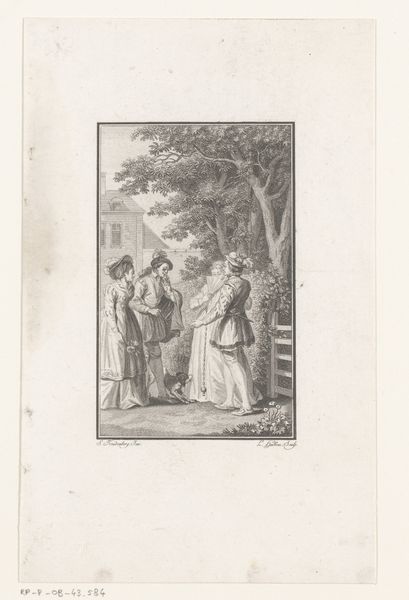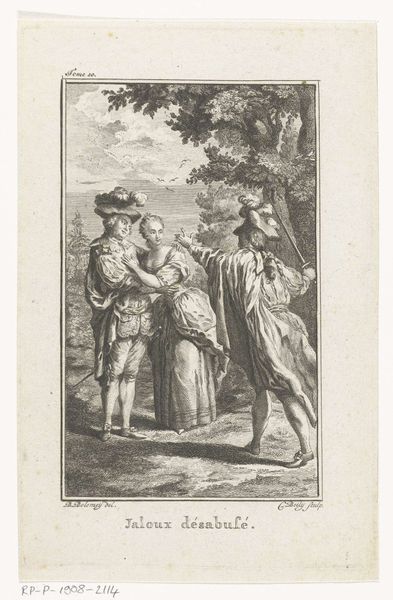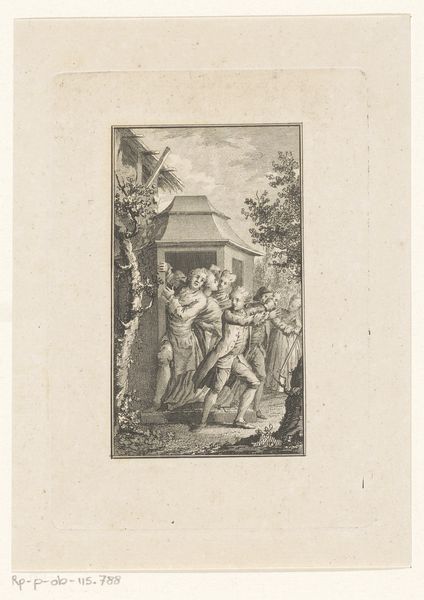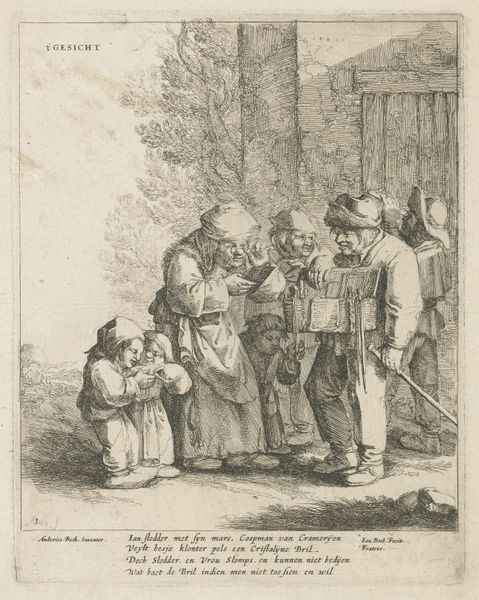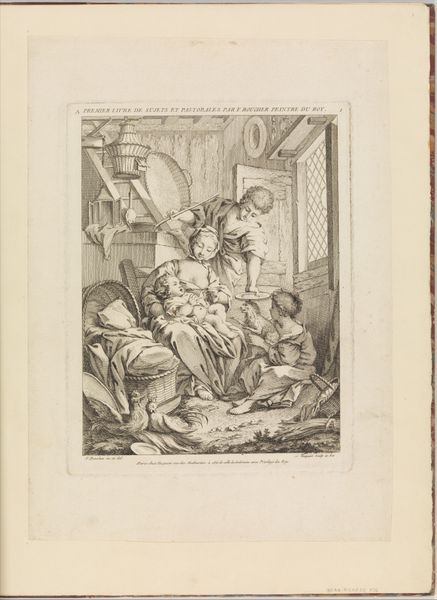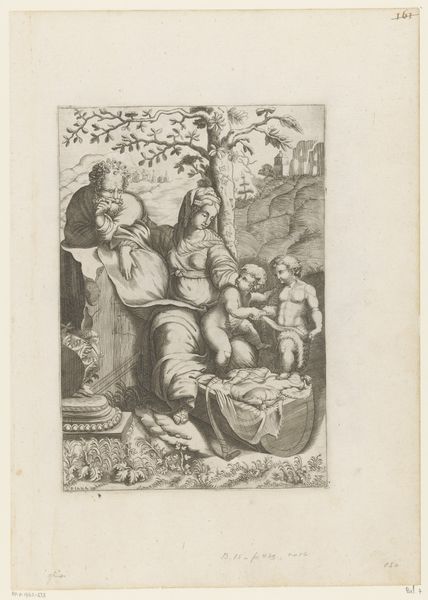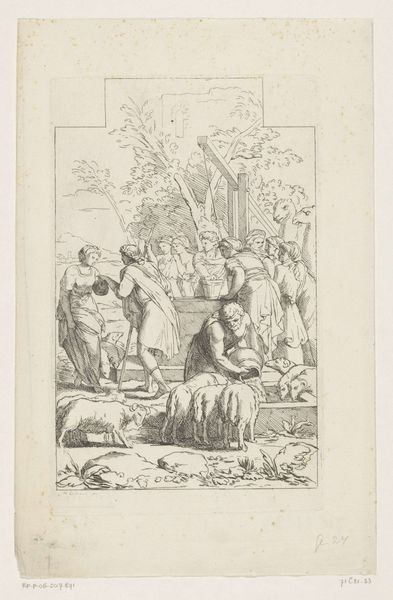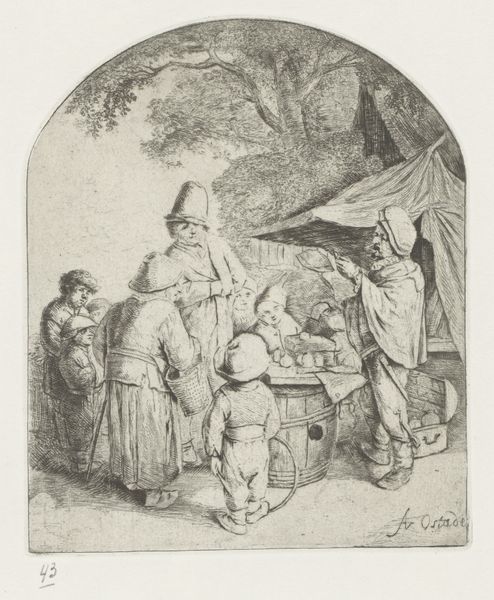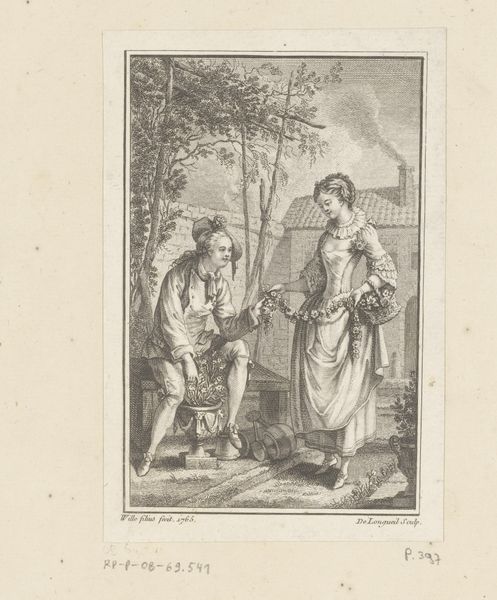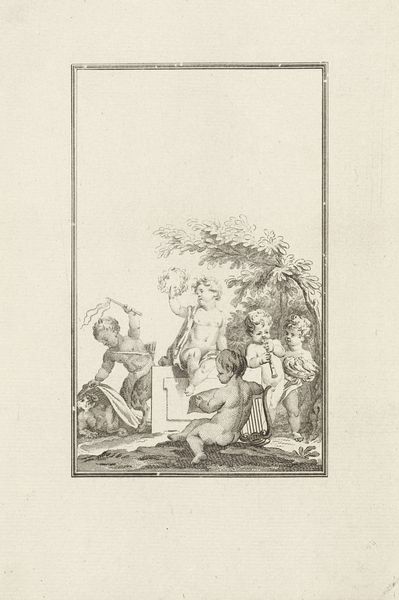
print, etching, engraving
#
narrative-art
# print
#
pen illustration
#
pen sketch
#
etching
#
old engraving style
#
landscape
#
figuration
#
genre-painting
#
engraving
Dimensions: height 148 mm, width 129 mm
Copyright: Rijks Museum: Open Domain
Curator: Ah, here we are in front of "The Quack," an engraving residing at the Rijksmuseum, made sometime between 1648 and 1745. The author remains, frustratingly, anonymous. Editor: It has a sort of busy energy to it. A lot going on for such a small piece. Immediately, my eyes go to the table filled with little jars and the man in the tall hat. It's all so... grainy, almost earthy. Curator: Earthy is an apt description! Engravings of this period, particularly those depicting scenes of everyday life, offer invaluable insights into the material culture and social practices. Just look at the crowd gathered. Each face, though tiny, seems etched with a unique story. Editor: Right, the act of engraving itself interests me here. Someone physically gouging into a metal plate, then the application of ink, the pressure…all to reproduce an image meant for dissemination. How many hands were involved in creating this print, circulating the idea of the "quack," and what did that labor look like? Curator: An excellent point. Think of the paper, the inks, the very tools used! Each element tells a silent story of craft and trade. As for the symbolism of the quack, well, he was a ubiquitous figure in the 17th and 18th centuries, preying on the desperate with false promises. The artist brilliantly captures that tension between hope and deception. Notice how some figures lean in with anticipation, while others observe with skepticism. Editor: It’s fascinating how readily such characters were integrated into popular visual culture, simultaneously demonized and seemingly relied upon by some, which speaks volumes about the socio-economic precariousness that drove people to such dubious providers in the first place. Were these engravings sold in marketplaces or disseminated via a formal bookselling apparatus? Curator: Both, likely. Prints such as these served as accessible forms of visual information and social commentary, circulating ideas beyond the confines of the elite. I can almost smell the bustle of the marketplace and the palpable tension of a hopeful cure… Editor: I hadn't quite thought of it that way, more than just a flat image. Thank you! It certainly puts a different, less romanticized light on the period's narratives, to consider its materiality.
Comments
No comments
Be the first to comment and join the conversation on the ultimate creative platform.
